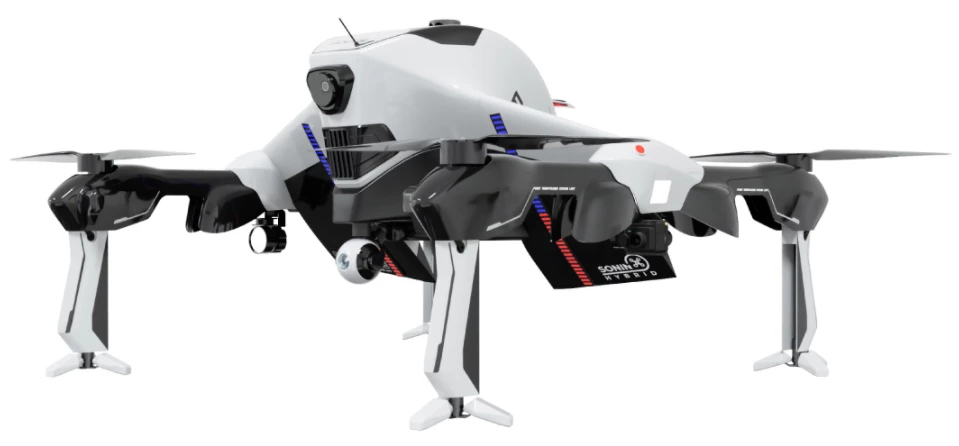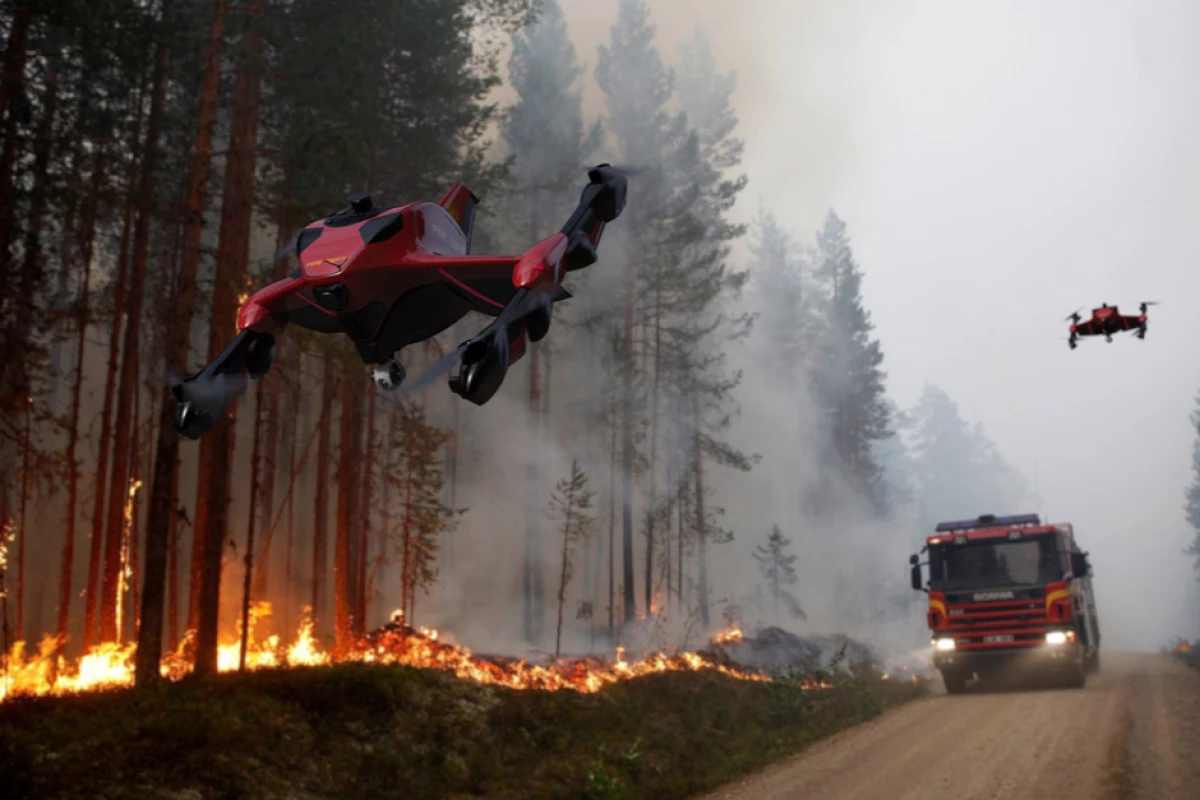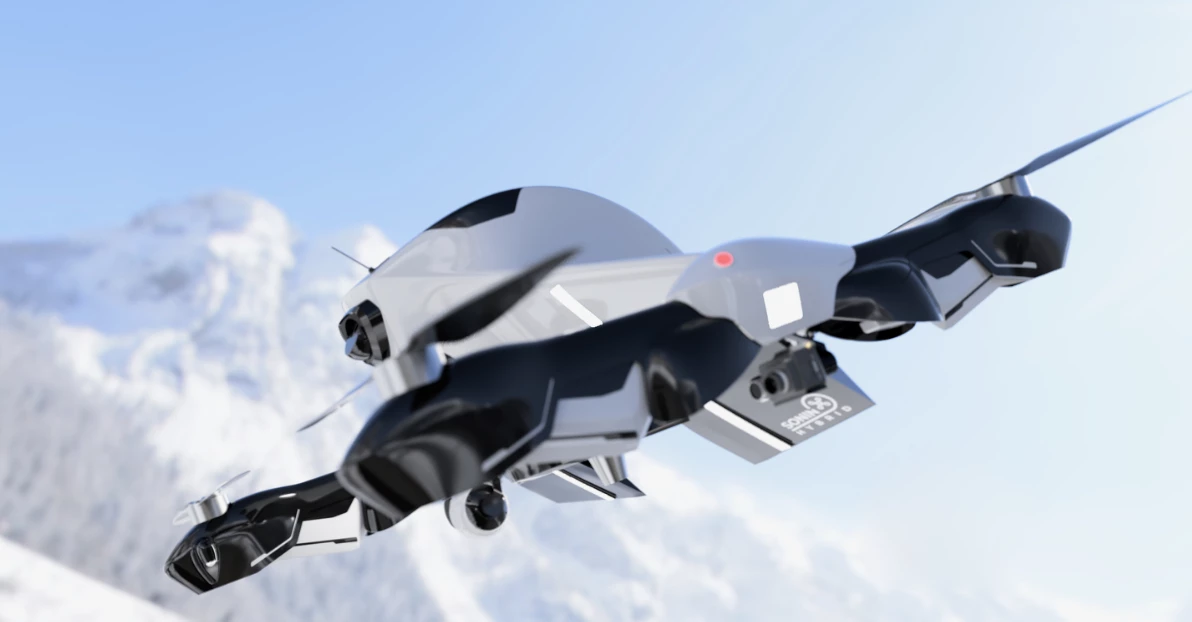If there's one thing that all types of first responders have in common, it's the fact that they put a premium on speed. The Recruit quadcopter was created specifically for such users, as it can reportedly fly at over 140 mph (225 km/h) and has a claimed 3-hour flight time.
Designed by Atlanta-based drone manufacturer Sonin Hybrid, the carbon fiber-bodied Recruit appropriately enough has a hybrid power system. More specifically, it incorporates a gasoline engine hooked up to a generator, which in turn continuously charges the batteries for the four electric motors.
It is this setup that is said to make the long flight time and energy-hungry high speeds possible. By contrast, pure-electric quadcopters such as DJI's Phantom 4 Pro typically top out at about 30 minutes of flight time, and a maximum forward speed of 45 mph (72 km/h).

Along with its hybrid tech, some of the Recruit's other features include a gimbal-stabilized 4K/30fps camera with 30X optical zoom; fixed and mobile target tracking; a FLiR night-vision camera; a 6,000-lumen spotlight; a loudspeaker that's audible up to a distance of 5 km (3 miles); retractable landing gear; and a choice of red/blue, red/white or yellow/white flashing LED lights.
The aircraft can be remotely controlled in real time, or it can autonomously follow a preprogrammed flight path.
A company representative tells us that production has started, with first deliveries expected to begin at the end of this year.
Source: Sonin Hybrid







